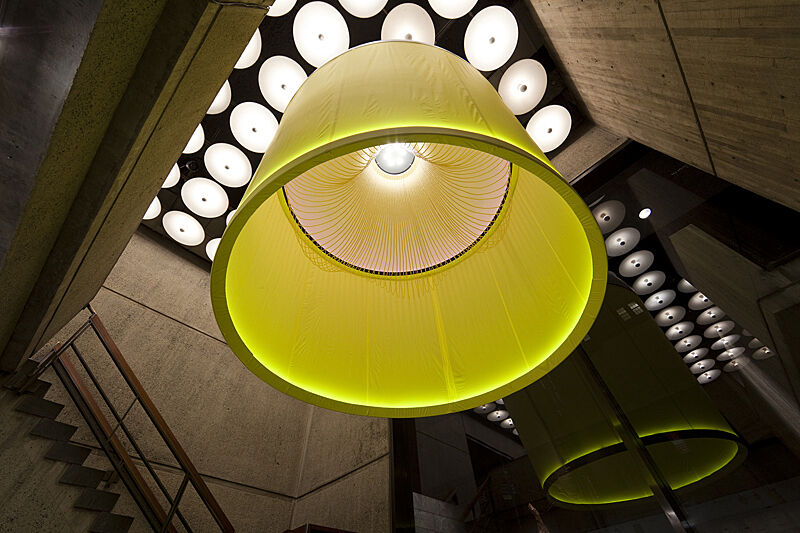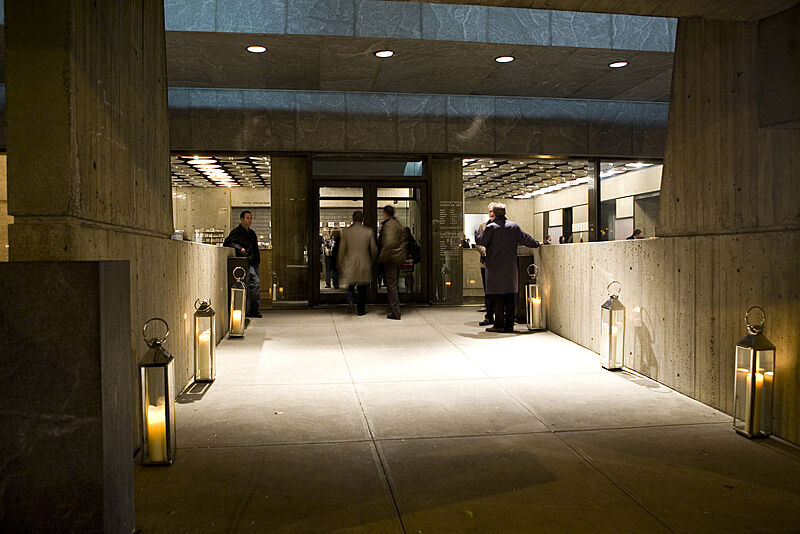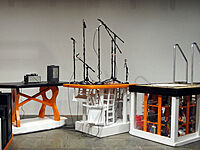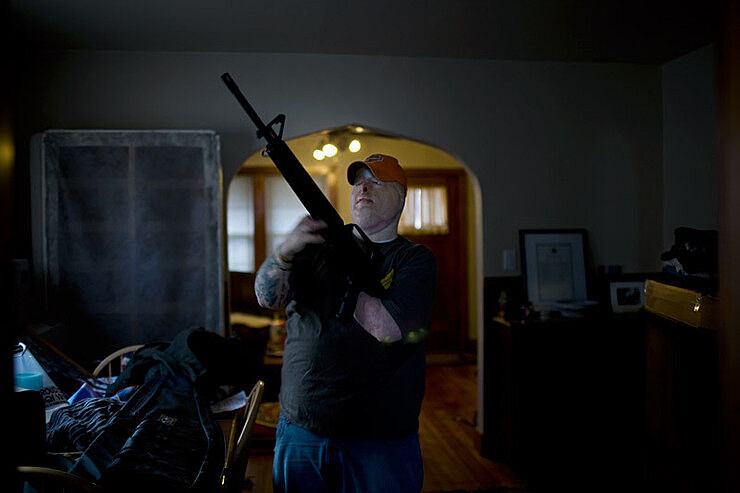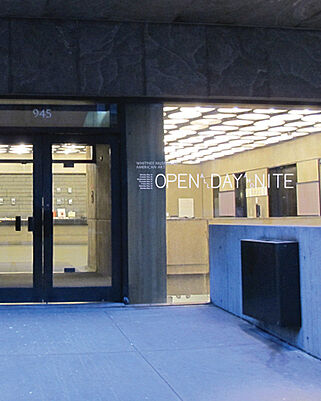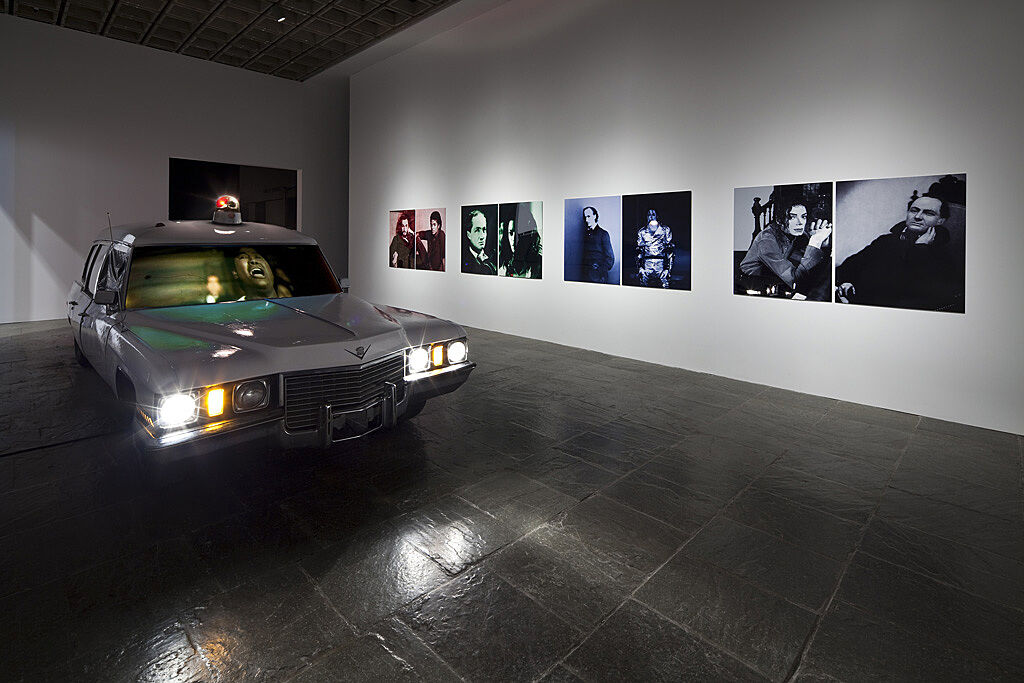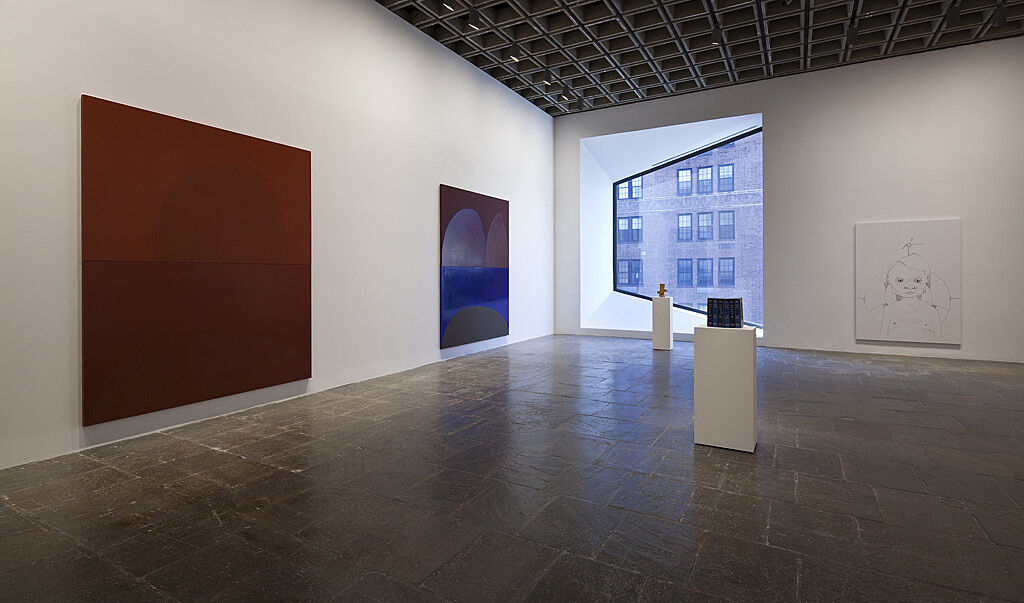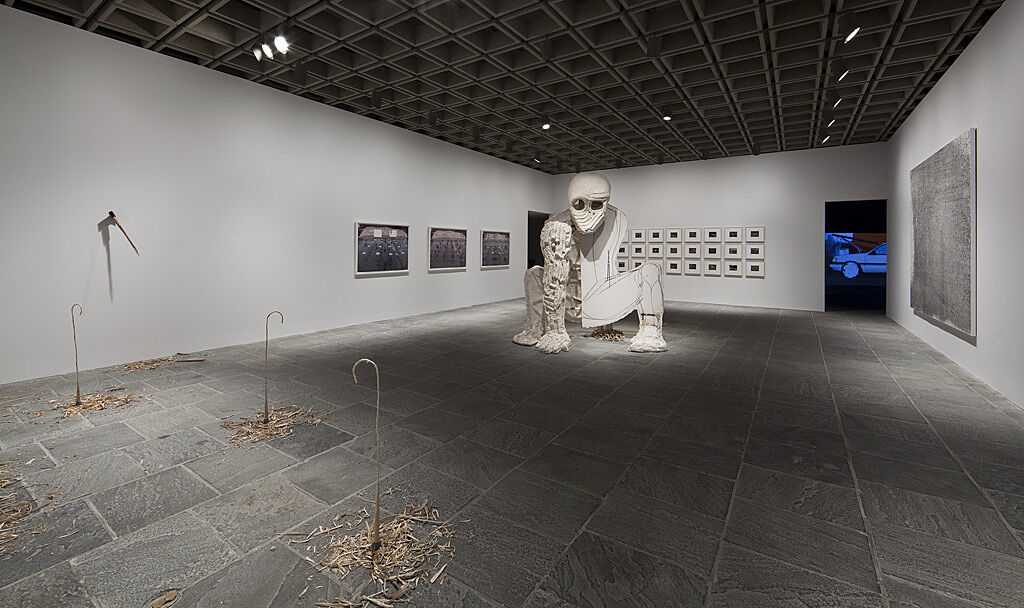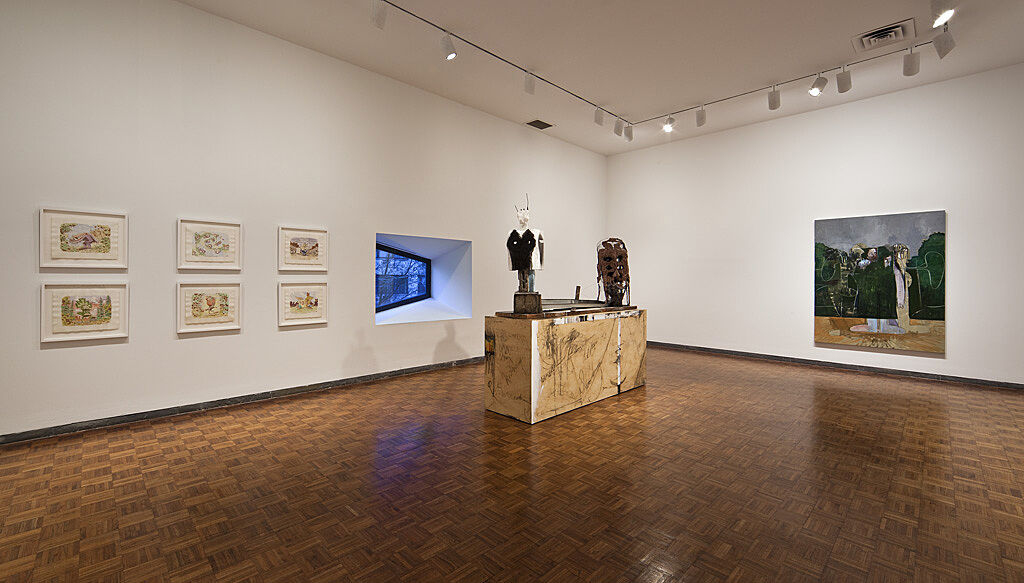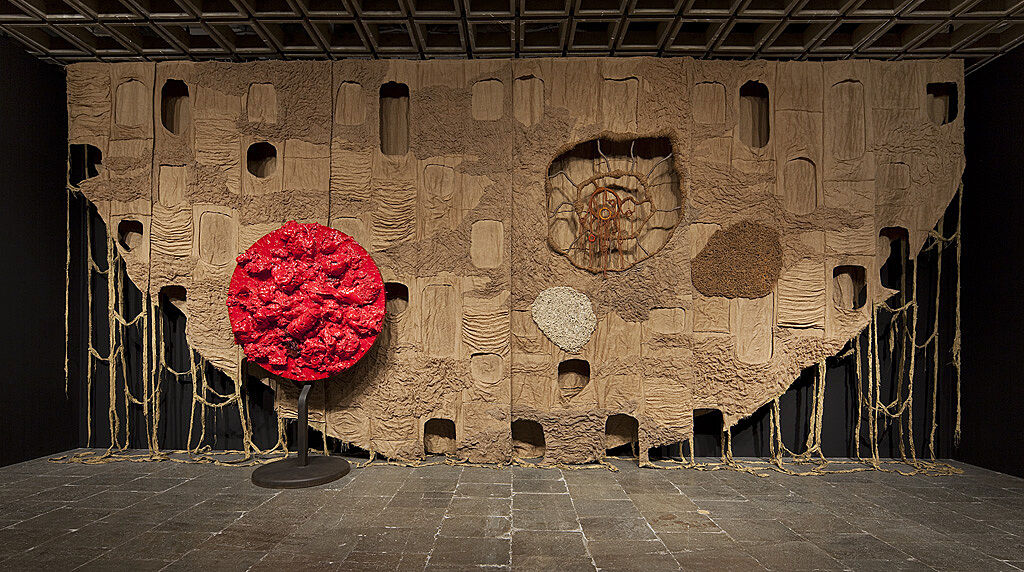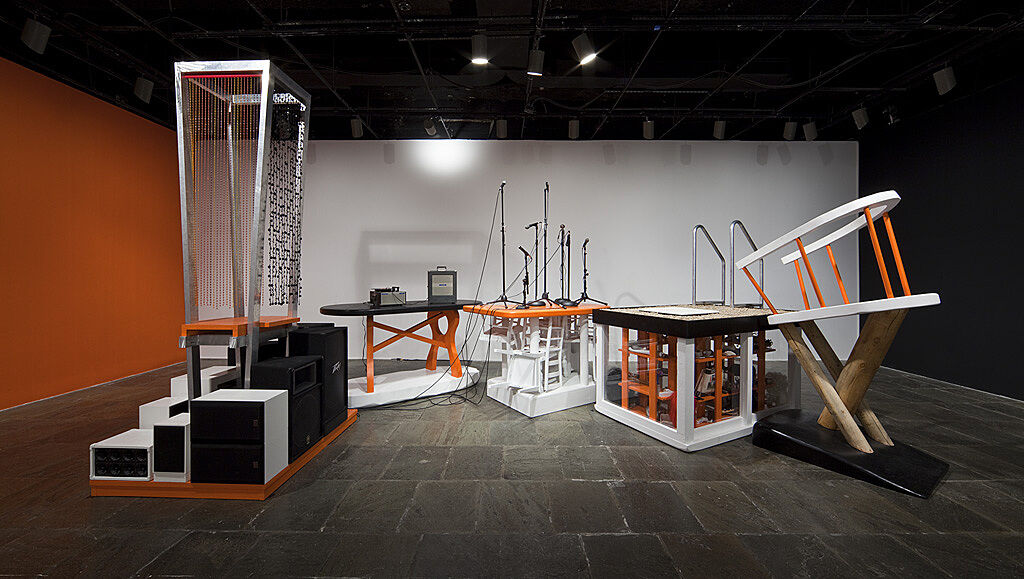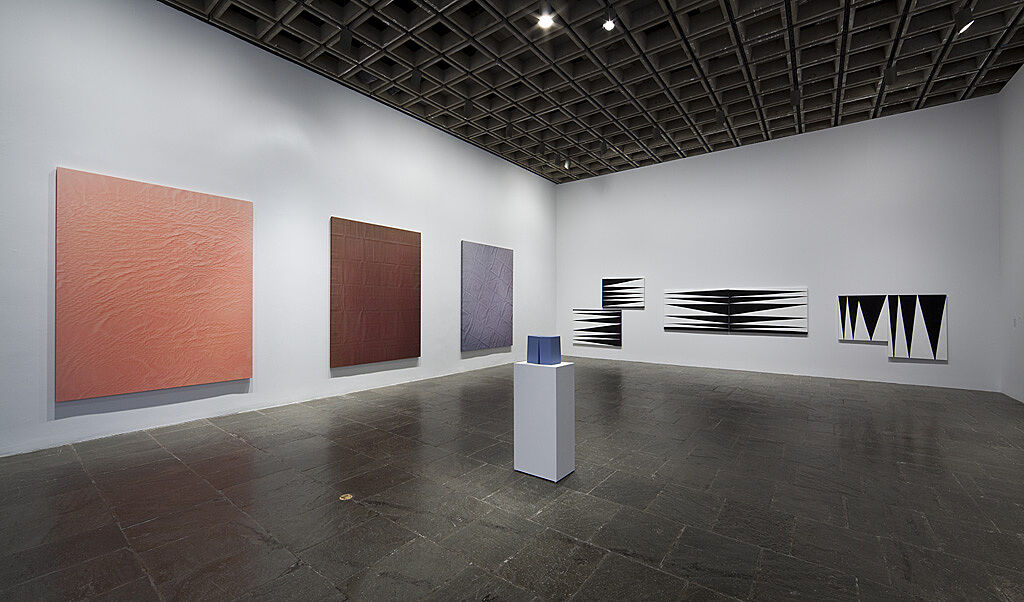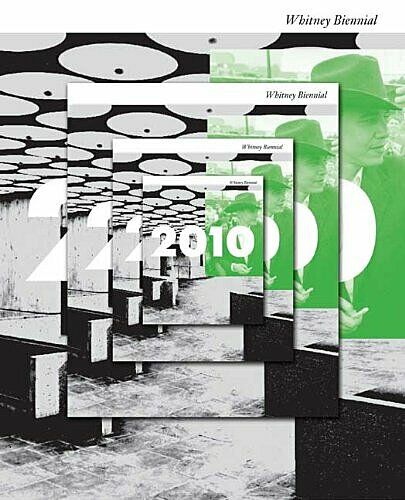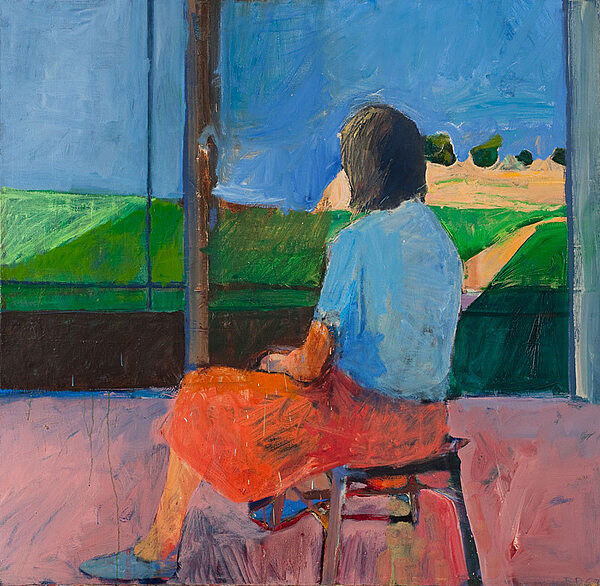Whitney Biennial 2010
Feb 25–May 30, 2010
Whitney Biennial 2010
This year marks the seventy-fifth edition of the Whitney’s signature exhibition. While Biennials are always affected by the cultural, political, and social moment, this exhibition “simply titled 2010” embodies a cross section of contemporary art production rather than a specific theme. To underscore the idea of time as an element of the Biennial and to demonstrate the influence of the past on 2010, familiar and less well-known artists from previous exhibitions are brought together in Collecting Biennials, an accompanying installation drawn from the Museum’s collection on view on the fifth floor. Balancing different media ranging from painting and sculpture to video, photography, performance, and installation, 2010 also serves as a two-way telescope through which the Whitney’s past and future can be observed.
The artists selected for this year’s exhibition provide diverse responses to the anxiety and optimism characteristic of this moment. At first glance, much of the work in 2010 can appear intensely personal and concerned with simple gestures and everyday actions, which might seem at odds with a sense of community and social responsibility. More accurately, however, these artists can be seen as constructing models that can serve as the foundations of lasting communities and sustained critique. Many of the artists in 2010 have created spaces for performances and potential encounters between themselves and individuals from different communities. These artists attempt to build collectivity in a new historical moment. Still other artists in 2010 look back to the history of modernism, in particular abstraction, as one way to forge a personal, experimental language while also rejuvenating the social potential of abstraction. Many of the images of the body presented in this exhibition are shaped by physical, spiritual, or social violence and bear the scars of war, discrimination, and hatred. These intimate perspectives of the body draw attention to larger social and political issues and are not cynical or hopeless but a form of regeneration, providing individual dignity and a chance to begin anew.
The fifty-five artists included in 2010 are representative of a much larger and broader world where many more artists are operating and active, each of them part of a rich and lively system from which the Biennial as an exhibition draws its inspiration. This Biennial, like the many that have preceded it, is also directly or indirectly shaped by the Whitney’s distinctive Marcel Breuer building, the Museum’s collection, and the legacy of past Biennial exhibitions, curators, and artists.
Sponsored in part by
Major support is provided by
Fashion sponsor
Generous support is provided by Laura and Casey Wasserman, Donald R. Mullen, Jr., the National Committee of the Whitney Museum of American Art in honor of Peter Dominick, and the Brown Foundation Inc.
Additional support is provided by the 2010 Friends, chaired by trustee Beth Rudin DeWoody: Philip Aarons and Shelley Fox Aarons, Jill and Darius Bikoff Foundation, Stefan Edlis and Gael Neeson, Rebecca and Marty Eisenberg, Liz and Jay Fensterstock, Marilyn and Larry Fields, Charlotte and Bill Ford, Barbara and Michael Gamson, Melanie Shorin and Greg S. Feldman, and Amanda Steck and Glenn Fuhrman.
Funding for 2010 is also provided by endowments created by Melva Bucksbaum, Emily Fisher Landau, and Leonard A. Lauder.
Wine sponsor
Official hotel
2010 Artists
David Adamo
Richard Aldrich
Michael Asher
Tauba Auerbach
Nina Berman
Huma Bhabha
Josh Brand
The Bruce High Quality Foundation
James Casebere
Edgar Cleijne and Ellen Gallagher
Dawn Clements
George Condo
Sarah Crowner
Verne Dawson
Julia Fish
Roland Flexner
Suzan Frecon
Maureen Gallace
Theaster Gates
Kate Gilmore
Hannah Greely
Jesse Aron Green
Robert Grosvenor
Sharon Hayes
Thomas Houseago
Alex Hubbard
Jessica Jackson Hutchins
Jeffrey Inaba
Martin Kersels
Jim Lutes
Babette Mangolte
Curtis Mann
Ari Marcopoulos
Daniel McDonald
Josephine Meckseper
Rashaad Newsome
Kelly Nipper
Lorraine O’Grady
R.H. Quaytman
Charles Ray
Emily Roysdon
Aki Sasamoto
Aurel Schmidt
Scott Short
Stephanie Sinclair
Ania Soliman
Storm Tharp
Tam Tran
Kerry Tribe
Piotr Uklański
Lesley Vance
Marianne Vitale
Erika Vogt
Pae White
Robert Williams
Publication
2010: Whitney Biennial
By Francesco Bonami and Gary Carrion-Murayari
Uniquely, this catalogue serves as both a handsome accompaniment to the 2010 exhibition and an insightful exploration of the significance of this acclaimed and often controversial event throughout its history. In addition to presenting full-color reproductions of the selected artists’ recent work, the curators have prepared a joint essay on the 2010 exhibition, and a group of writers contributed brief entries on the represented artists’ techniques, influences, and recent work. A detailed appendix features a short text on the significance of the museum’s annual and biennial exhibitions in the context of the museum’s history and broader collection, as well as photographs of previous installations, facsimiles of historical reviews, and a chronological list of artists included in past annuals and biennials. Thumbnails of all previous catalogue covers are also included, positioning each Biennial as a snapshot of artistic practice at a particular moment.
This catalogue is no longer available at the Museum Shop.
In the News
“At a Biennial on a Budget, Tweaking and Provoking”
—The New York Times
“I left the museum with a giant burst of happiness for the infinite creativity of America.”
—New York
Audio Slideshow: “Handsome and Restrained”
—The New Yorker
“. . . this show offers a master class on curating. It balances formal with content-based works, while hinting at an overarching theme on which it hangs its hat.”
—Time Out New York
“Much of the work is the kind you want to spend time with—art that’s worth absorbing, considering, and remembering.”
—The Daily Beast
“The Whitney is pre-eminent in its ability to take the temperature of American art.”
—The Guardian
“Good, skillfully arranged, nourishing and digestible. It’s a spread of hard-won works of art you’re pleased to see.”
—Staten Island Advance
“This is not only the greatest of Whitney Biennials, it is the greatest show ever produced by the Whitney Museum.”
—Artnet
More from this series
Learn more about the Whitney Biennial, the longest-running survey of American art.

